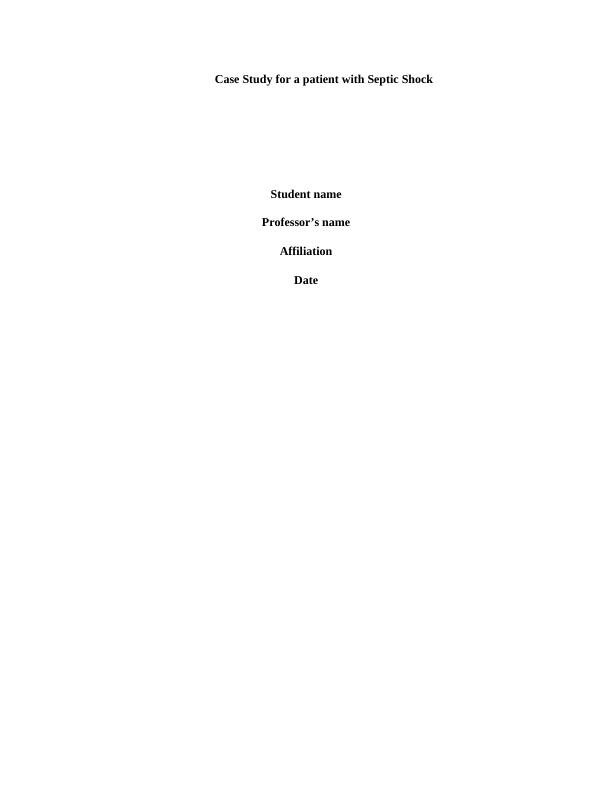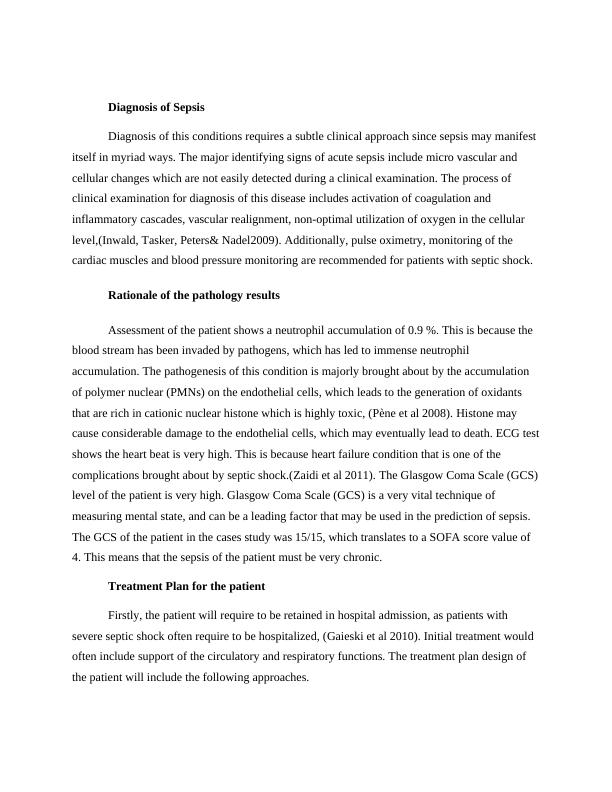Case Study for a Patient with Septic Shock
8 Pages2409 Words366 Views
Added on 2023-06-05
About This Document
This paper analyzes a case study of a patient with septic shock, including diagnosis, treatment plan, and nursing interventions. It discusses the symptoms, complications, and management of sepsis. The paper also highlights the role of nurses in the identification, diagnosis, and management of sepsis.
Case Study for a Patient with Septic Shock
Added on 2023-06-05
ShareRelated Documents
End of preview
Want to access all the pages? Upload your documents or become a member.
Pathogenesis of Urinary Tract Infection and Nursing Strategies
|6
|2172
|81
Case Study on Urosepsis
|6
|1636
|94
Pneumonia Case Study - Pathogenesis, Nursing Strategies and ABG Analysis
|4
|869
|261
Pathophysiological Link to High Priority Clinical Manifestation in Burn Patient with Septic Shock
|4
|553
|383
Urinary Tract Infection with Sepsis
|8
|1877
|97
Pathophysiology of UTI and Sepsis
|7
|1660
|419



